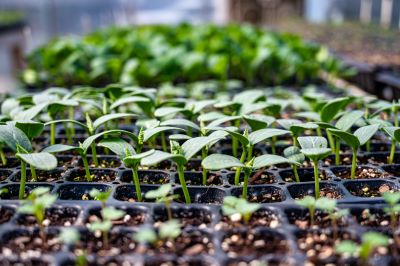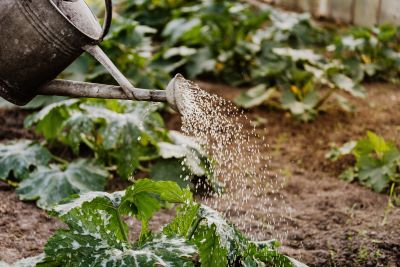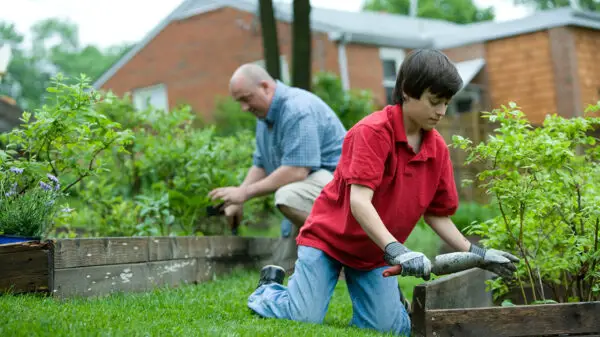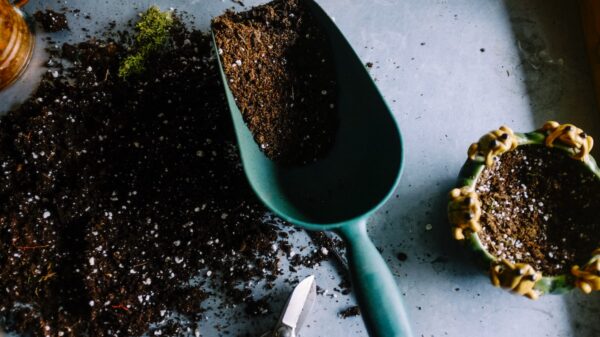What are the Benefits of Companion Planting in Microgardening and How Does It Work? Unveiling the Secrets
In the realm of microgardening, the benefits of companion planting are nothing short of transformative. This age-old technique involves strategically planting different crops together to achieve a variety of advantages, including pest control, improved soil fertility, and enhanced growth. Let’s delve into the fascinating world of companion planting and uncover the numerous benefits it offers.
What Exactly Is Companion Planting?
Companion planting in microgardening is a strategic agricultural technique where different plant species are cultivated near each other for their mutual benefit. It involves carefully selecting and placing plants that can support and enhance each other’s growth, health, and overall productivity. This practice is based on the idea that certain plants can work together to deter pests, improve soil fertility, and maximize space utilization, resulting in a more successful and harmonious garden.
Microgardening is an art and science that has been practiced for centuries. As gardeners, we are constantly seeking ways to optimize our space, improve our yields, and foster a sustainable ecosystem. Companion planting, an ingenious technique, has gained widespread acclaim for its remarkable ability to enhance gardening outcomes. In this article, we explore the benefits of companion planting in microgardening and shed light on how this method works its magic in our green spaces.

Exploring the Benefits
Bountiful Harvests
Companion planting maximizes the use of available space, allowing for a more productive garden. By pairing compatible plants, you create a symbiotic relationship that fosters healthier growth and ultimately leads to a more abundant harvest.
Natural Pest Control
Certain plants possess natural properties that repel pests. By strategically placing these pest-repelling plants alongside susceptible crops, you can deter harmful insects and reduce the need for chemical pesticides.
Enhanced Soil Fertility
Companion planting often involves planting nitrogen-fixing plants like legumes, which enrich the soil with essential nutrients. This boosts the overall fertility of the soil and promotes healthier growth for neighboring plants.
Weed Suppression
Taller or broader companion plants can provide shade, suppressing the growth of weeds and minimizing competition for vital nutrients and sunlight.
Disease Prevention
Some plant combinations can help prevent the spread of diseases, creating a healthier microgarden ecosystem. The right companions can act as a shield, reducing the risk of infections.
Water Conservation
Companion planting can optimize water usage by grouping plants with similar water needs together. This ensures efficient irrigation and helps conserve this precious resource.

How Does Companion Planting Work?
Companion planting operates on the principle of planting mutually beneficial crops in close proximity. The combinations are carefully selected based on factors such as growth habits, nutrient requirements, and natural pest deterrents. Here’s a closer look at how it works:
Plant Synergy: Certain plants have symbiotic relationships that enhance growth, deter pests, or improve soil quality when grown together.
Diversity is Key: By diversifying the plant types in your garden, you create a balanced and harmonious ecosystem that supports each plant’s health and growth.
Strategic Pairing: Pair plants that complement each other, such as tall plants providing shade for shorter ones or pest-repellent plants protecting vulnerable crops.
How Can You Get Started with Companion Planting?
To get started with companion planting, follow these steps:
Research and Planning:
Begin by researching which plants are compatible with each other and which combinations offer mutual benefits. Make a list of plants that thrive together and those that should be kept apart.
Understand Plant Relationships:
Learn about the symbiotic relationships between different plants. Some plants can enhance the growth of others, repel pests, or improve soil conditions. Understanding these dynamics is crucial for successful companion planting.
Select Suitable Companions:
Choose plant combinations that align with your gardening goals. Consider factors such as growth habits, nutrient requirements, and pest-repelling properties when deciding which plants to pair.
Create a Planting Plan:
Plan the layout of your garden or growing area. Arrange the plants in a way that maximizes their mutual benefits. For instance, plant taller crops where they can provide shade for shorter ones.
Start Small:
If you’re new to companion planting, start with a small area or a few plant combinations. Experiment and observe how the plants interact and grow together. Learn from your experiences and gradually expand your companion planting efforts.
Monitor and Adjust:
Regularly monitor the progress of your garden. Observe how the plants are thriving, if pests are being deterred, and if the soil quality is improving. Adjust your planting arrangements based on what you observe to optimize results.
Record Keeping:
Maintain a gardening journal to track your companion planting endeavors. Note the plant combinations you’ve tried, their outcomes, and any insights you gain. This record will guide your future planting decisions.
Continuous Learning:
Stay informed about new plant pairings, techniques, and best practices in companion planting. Join gardening communities, read books, and engage with fellow gardeners to broaden your knowledge and improve your companion planting skills.

Frequently Asked Questions
Can I companion plant any crops?
Certainly! Companion planting is a flexible technique that allows for experimentation. While some plants have more synergistic relationships than others, your specific microgarden might have unique dynamics. Feel free to experiment and discover what works best for your garden’s individual needs and conditions. It’s important to note that some plants shouldn’t be planted together in a companion plant style for a multitude of reasons (more on that below).
Are there any plants I should avoid planting together?
Yes, there are combinations to avoid. Certain plants can hinder each other’s growth or even attract pests when planted in close proximity. It’s essential to conduct thorough research and plan your companion planting strategy carefully to ensure a harmonious and productive garden.
What plants should you avoid companion planting?
In companion planting, certain plant combinations should be avoided. For instance, fennel can hinder the growth of coriander, and beans can stunt onions’ growth. Sunflowers might compete with potatoes for nutrients, affecting their yield. Additionally, aromatic herbs near cucumbers can deter essential pollinators. Cabbage when planted near tomatoes can hinder their growth and affect flavor. Kale produces compounds that can affected strawberries growth. And potatoes planted near apple trees can lead to an increased risk of potato blight. Understanding these incompatible pairs is vital for successful companion planting, prompting careful research and planning for a harmonious and productive garden.
How do I start companion planting in my microgarden?
Starting with companion planting involves research and careful planning. Begin by exploring compatible plant combinations that align with your gardening goals. Create a planting plan that considers factors like growth patterns, nutrient requirements, and pest-repelling properties of the plants. It’s wise to start small and gradually expand as you gain hands-on experience and confidence in this planting method.
Can companion planting work in a limited space?
Absolutely! Companion planting is exceptionally adaptable and can be successfully utilized in small garden spaces, containers, pots, or even vertical gardens. Its flexibility in adapting to confined spaces is one of its strengths, making it a viable option for gardeners with limited room.
Is companion planting suitable for both vegetable and flower gardens?
Definitely! Companion planting is a versatile approach that applies equally well to vegetable and flower gardens. The benefits of companion planting, including enhanced growth, pest control, and soil fertility, can be harnessed in both types of gardens. It not only promotes healthy growth but also enhances the overall aesthetics of your garden by creating visually appealing combinations.
Where can I find more resources on companion planting?
There is a wealth of resources available to help you delve deeper into companion planting. Gardening books, both in print and digital formats, provide in-depth insights and guidance. Additionally, online forums and local gardening clubs often offer a platform for discussions, shared experiences, and a plethora of valuable information on companion planting techniques and best practices. These resources can serve as valuable references and guides as you embark on your companion planting journey.
Are there any tools that help specifically with companion planting?
While there are many tools that are helpful with microgardening, there aren’t any that are specific to just companion planting. However, you may want to make sure that you have a good pair of pruners that way you can ensure that one companion plant doesn’t overshadow another. It’s also a good idea to make sure that you have plant markers or labels on hand. These will help ensure that you’ve got everything labeled correctly so you can identify different plant varieties and your companion plants as well.
Can I companion plant in a container garden?
Absolutely! Companion planting is adaptable and can be effectively implemented in container gardens. You can carefully choose compatible plant combinations that thrive well in confined spaces. Consider factors like the container size, sunlight exposure, and the plants’ needs to create a harmonious and flourishing mini-ecosystem.
In Conclusion
Embarking on a microgardening journey with companion planting at your side is a surefire way to elevate your gardening experience. The benefits of companion planting, from a bountiful harvest to a thriving, balanced ecosystem, are awe-inspiring. Experiment, learn, and watch your garden flourish as you harness the power of strategic plant partnerships. Happy gardening!










